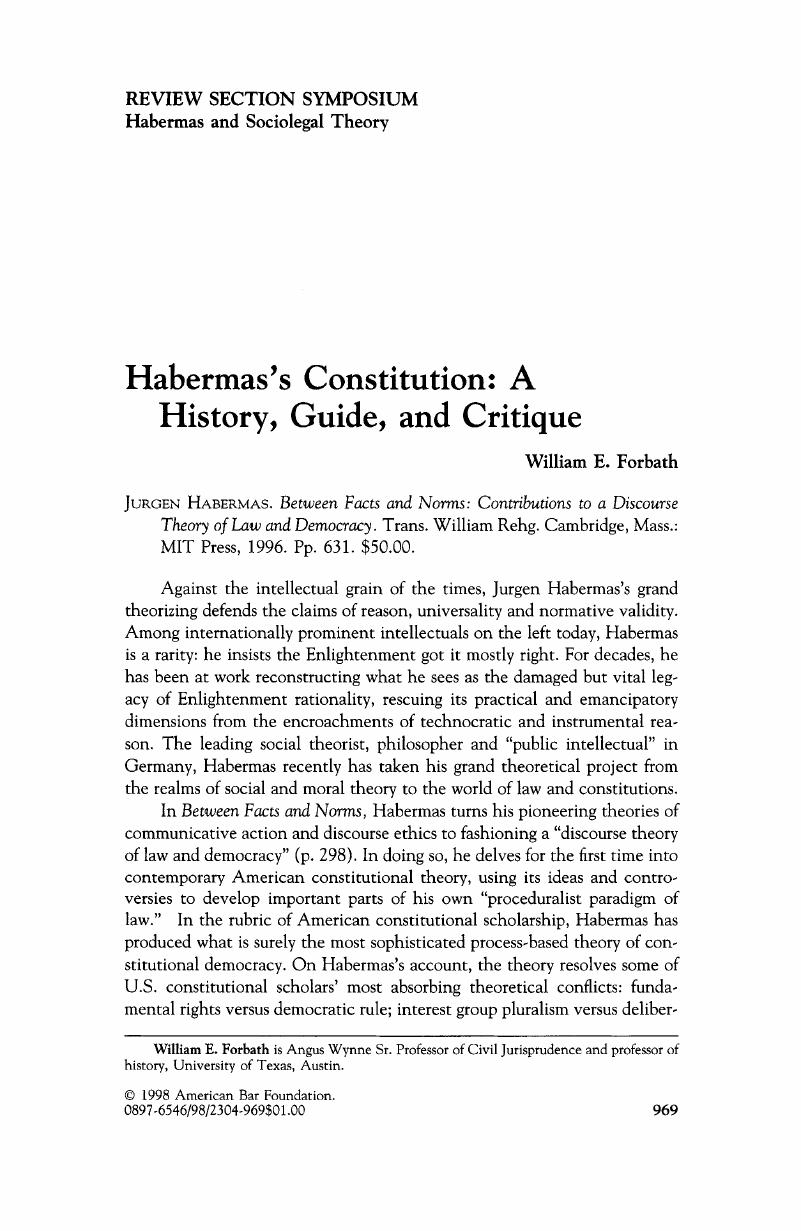Crossref Citations
This article has been cited by the following publications. This list is generated based on data provided by Crossref.
Koppelman, Andrew
2013.
Darwall, Habermas, and the Fluidity of Respect.
Ratio Juris,
Vol. 26,
Issue. 4,
p.
523.
Prasai, Khagendra
2024.
Habermas’s Emancipation as Lifeworldization.
New German Critique,
Vol. 51,
Issue. 2,
p.
201.



